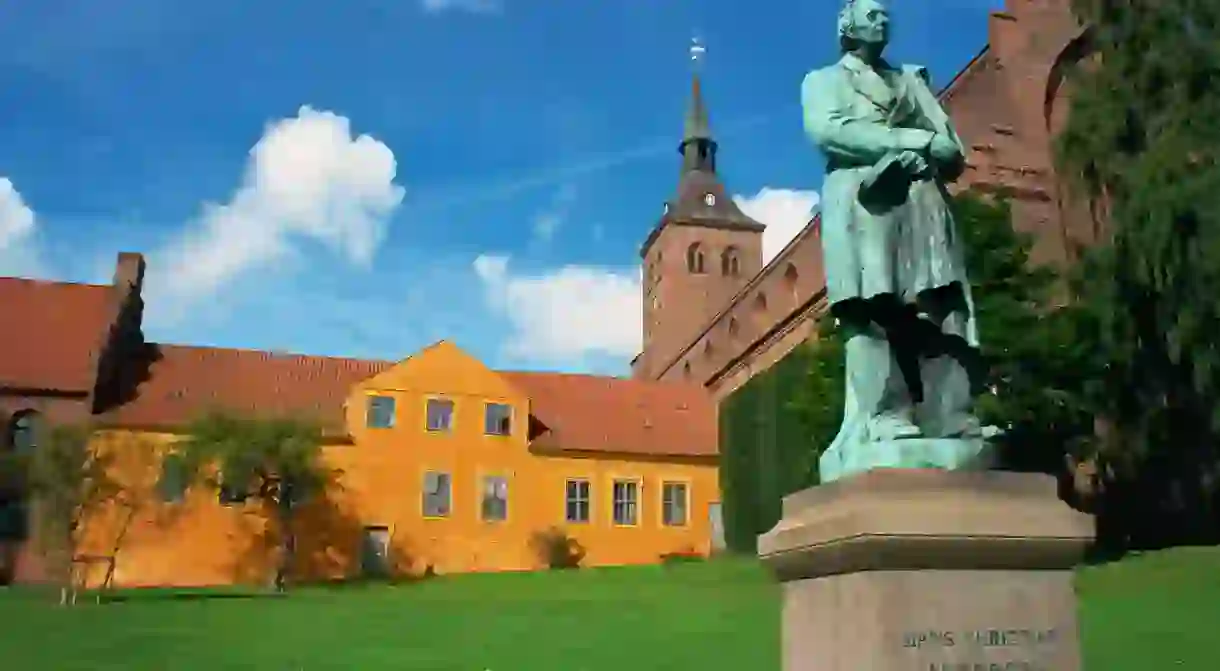Epic Places in Denmark That'll Give You Wanderlust

Some of them are just an hour away from Copenhagen while others are on remote islands or northern Denmark, but these hidden corners that even Danes haven’t been to yet compose the country’s stunning landscape. This article presents only 10 of them, but they’re enough to persuade travelers to put visiting Denmark on their bucket list. Did you know – Culture Trip now does bookable, small-group trips? Pick from authentic, immersive Epic Trips, compact and action-packed Mini Trips and sparkling, expansive Sailing Trips.
Rubjerg Knude
Climb on the top of this Northern-Denmark lighthouse built on the late 19th century and enjoy the spectacular view of Rubjerg Knude and the North Sea. Located on a 200 foot (60 meter) high cliff, it has a 30-meter-high migrating dune on top. The scenery of the remote area has transformed over the years due to the strong winds and the lighthouse has been encroached by the sand. It is said that by 2023 the tower will fall into the sea, so anyone wanting to see it better hurry.
Møns Klint
The Cliffs of Møn are one of the most-stunning landscapes in Denmark. The 3.7 miles (6 kilometers) of chalk cliffs that stretch 393.7 feet (120 meters) above sea level attract thousands of tourists every year who look in awe the outstanding scenery. In the green area around the cliffs, visitors will find trees, small lakes, steep hills, and a great number or rare plants such as the Orchis purpurea. Walk or cycle around the Liselund Park and the Klintholm Estate and explore the old farm buildings from the 18th century.
Egeskov Castle

A trip to Egeskov Castle will take visitors on a walk through history to the time when kings and queens ruled the country. Built in 1554 for defense purposes, the majestic castle has hosted various nobles families over the years and since 1959, it has been welcoming thousands of locals and tourists every year. Egeskov stands in the middle of an outstanding park which has won several awards such as an European Garden Award by the European Garden Heritage Network.
Skagen

Long sandy beaches, seals, and rare birds are some of the things that can be found in Skagen’s landscape. The remote city is located on the northernmost part in Denmark on Jutland Island, and its surroundings have a captivating beauty. Millions of tourists head to Skagen every year to see two seas, the Skagerrak and the Kattegat, meet at Grenen, north of the city. Due to this unique natural phenomenon, the strong currents created mean that swimming isn’t allowed in this area. However, visitors can head to the town’s west- and east-coast beaches where shallower waters allow locals and tourists to gather, relax, and sunbathe.
Jægersborg Dyrehave
Not far away from Copenhagen lies The Deer Park (Jægersborg Dyrehave), a huge-forest park where approximately 2,100 deer live among oak trees. In 2015, the stunning forest was included in UNESCO’s World Heritage Site under “Par force hunting landscape in North Zealand”. Besides the great landscape, visitors can have a short glimpse of Denmark’s history: among trees stands the baroque-style Hermitage Hunting Lodge which was built when Christian IV ruled the country. On the other side of the forest stands Bakken, the oldest amusement park in the world, which has a great number of rides and games for all ages.
Frederiksborg Castle
One of the numerous castles and palaces built during Christian IV’s reign is Frederiksborg Castle. Located in Hillerød, Frederiksborg is the largest Renaissance-era castle in Scandinavia and considered one of the architectural masterpieces of that style. After exploring the great-outdoor surroundings, visitors can see 500 years of Danish history unfold before their eyes in the Museum of National History housed in the stunning castle.
The Old Town (Den Gamle By)
In Aarhus’ Old Town, visitors can travel back in time and get a glimpse of how life was in Denmark before 1900, in the 1920s, and in the 1970s. Neighborhoods with cobblestoned streets, 17th-century mansions, and people dressed in period costumes will make visitors forget they’re just strolling around in an open-air museum. Since 1914 when Den Gamle By opened for the first time to the public, thousands of tourists have visited the museum in order to see Danes’ daily habits throughout the different decades.
Limfjord at Fur Island
Despite its small size, Fur is among locals’ top destinations. Aside from the captivating landscape, it also offers a wide range of activities such as galleries, workshops, and museums. In 2010, readers of a famous Danish newspaper selected it as “Denmark’s most wonderful island”. Visitors’ favorite habit while roaming around Fur’s beautiful beaches is looking for fossils which are sometimes more than 55 million years old.
Men by the Sea
On the southwest coast of Denmark and next to Sædding Beach, Esbjerg travellers will find a majestic monument which consists of four white sculptures of four seated males. Each one of them is 30 feet (9 meter) tall. Designed by Svend Wiig Hansen, the awe-inspiring monument Men by the Sea has been standing on the long sandy beach since 1995 ‘welcoming’ all those travelers entering or leaving the Esbjerg Harbor.
Hammeren at Bornholm
Hammeren is a protected area perched on the northernmost part of Bornholm, the beautiful island where Danes usually spend their summer days. Sæne Bugt Bay in the Baltic Sea lies in front of the rocky promontory. A 276 foot (84 meter) hill, a lighthouse, Hammersø, the largest lake on the island, and cliffs stretching 86 feet (26 m) from the Baltic Sea comprise one of the most remarkable landscapes in Denmark.













